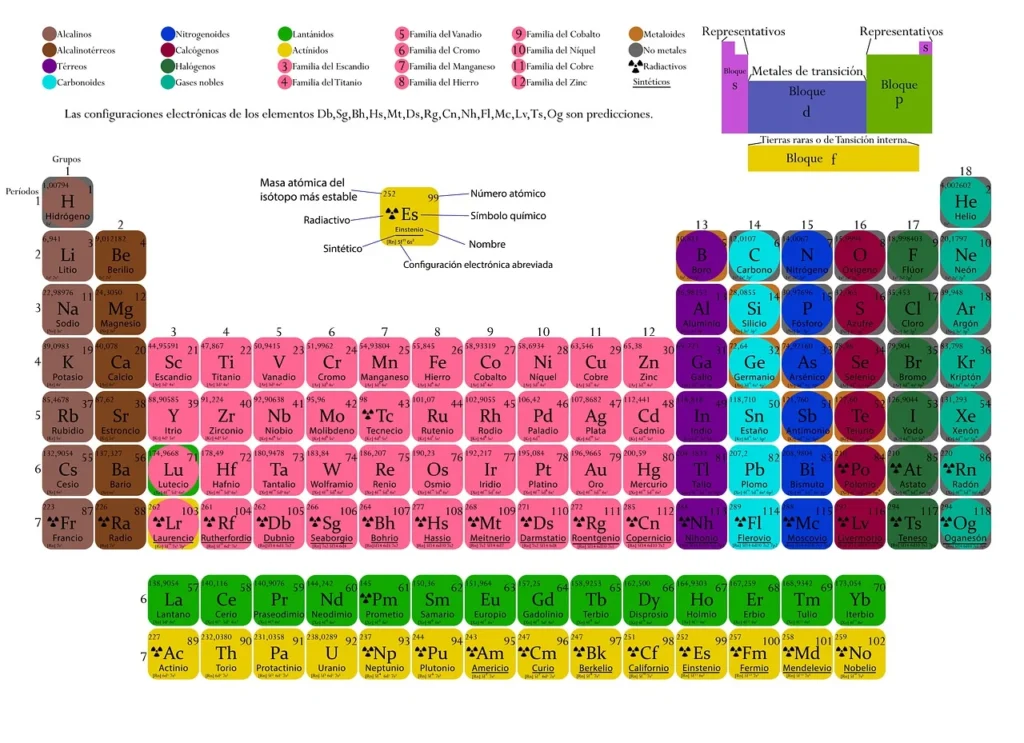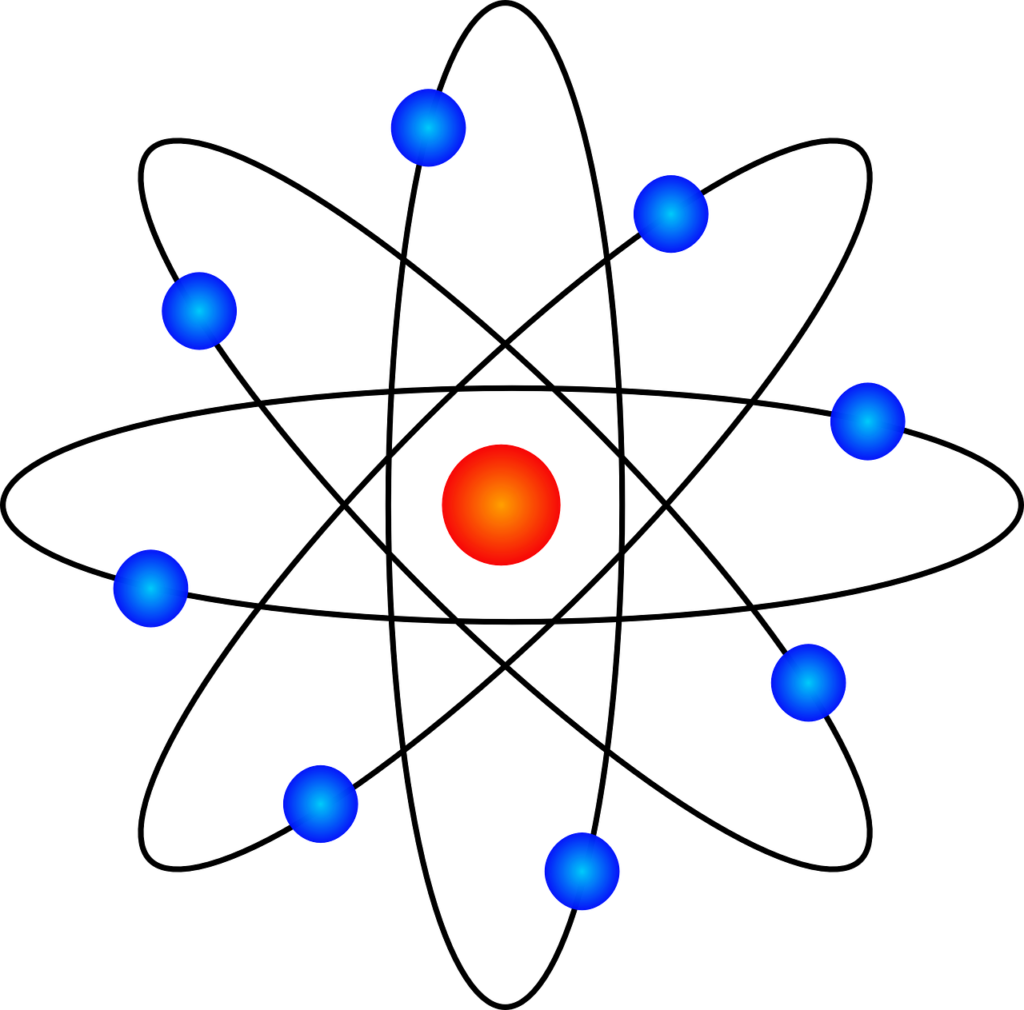The electronic configuration of elements is a introductory concept in chemistry that explains how electrons are arranged around the nucleus of an atom. This arrangement plays a vital role in determining an element’s chemical properties, reactivity, and place in the periodic table.

1.Atomic Structure and Electron Arrangement
Atoms are composed of a central nucleus, which contains protons and neutrons, and electrons that revolve around the nucleus in energy levels or shells. Electrons are arranged in shells based on increasing energy, and this arrangement is known as the atom’s electronic configuration.
Shells closest to the nucleus have the lowest energy and farther away have higher energy levels. Shells are designated as K, L, M, N, etc., or numbered as 1, 2, 3, 4, etc., with each shell capable of holding a specific number of electrons based on the formula 2n2 here n is the shell number.
For example:
The first shell (K or 1) can hold up to 2 electrons.
The second shell (L or 2) can hold up to 8 electrons.
The third shell (M or 3) can hold up to 18 electrons.
2. Subshells and Orbitals
Within these main shells, there are subshells (s, p, d, and f) and define the electron arrangement. Each subshell consists of orbitals, where each orbital can hold a maximum of 2 electrons. The distribution within subshells is essential because electrons tend to occupy the lowest energy orbitals first, follow the Aufbau principle.
The order of filling is often remembered by using the diagonal rule or by observing the sequence of energy levels, as follows:
1s < 2s < 2p < 3s < 3p < 4s < 3d < 4p < 5s < 4d < 5p < 6s < 4f < 5d < 6p < 7s.
3. Principles Governing Electron Configuration
Three major principles guide the filling of electrons in an atom’s orbitals:
Aufbau Principle: Electrons occupy the lowest energy orbital available.
Pauli Exclusion Principle: No two electrons in an atom can have the same set of four quantum numbers, meaning each orbital can hold only two electrons with opposite spins.
Hund’s Rule of Maximum Multiplicity: When electrons occupy degenerate orbitals (orbitals with the same energy), they fill each orbital singly before pairing up. This minimises electron repulsion and ensures a more stable configuration.

4. Periodic Table and Electronic Configuration
Periodic table is organised based on elements’ atomic numbers, which correlate directly with their electronic configurations. The table has four main blocks: s-block, p-block, d-block, and f-block, each representing different subshells in which the last electron resides.
s-Block Elements: These are found in Groups 1 and 2. They have a general configuration of ns1 to ns2, where “n” is the principal quantum number. Elements in this block are highly reactive, with alkali metals and alkaline earth metals showing increasing reactivity down the group.
p-Block Elements: Elements from Groups 13 to 18 have their outermost electrons in the p-orbitals, with configurations ranging from ns2 np1 to ns2 np6. These both metals and non-metals, with Group 18 representing the noble gases, which have a stable ns2 np6 configuration.
d-Block Elements: Also known as transition metals, these elements have their last electron entering the d-orbital. Their configuration is typically (n−1)d1−10ns0−2 where “n” represents the outermost shell. The d-block elements are known for their variable oxidation states and are often good conductors of electricity.
f-Block Elements: This block contains the lanthanides and actinides, with electrons filling the f-orbitals. These elements are also known as inner transition metals and have complex configurations that contribute to unique magnetic and optical properties.
Group 1 elements | Alkali metals |
Group 2 elements | Alkaline earth metals |
Group 11 elements | Coinage metals |
Group 15 elements | Pnicogens |
Group 16 elements | Chalogens |
Group 17 elements | Halogens |
Group 18 elements | Noble gases or Aerogens |
5. Periodic Trends Explained by Electronic Configuration
Electronic configuration not only determines an element’s position in the periodic table but also influences its chemical behavior and periodic trends:
Atomic Radius: The atomic size generally decreases across a period from left to right due to increased nuclear charge, which pulls electrons closer. However, atomic size increases down a group as new electron shells are added.
Ionisation Energy: This is the energy required to remove an electron from an atom. Ionisation energy generally increases across a period, as increased nuclear charge makes it harder to remove an electron. Down a group, ionisation energy decreases because outer electrons are further from the nucleus.
Electronegativity: This property, indicates an atom’s ability to attract electrons, also increases across a period and decreases down a group. Non-metals like fluorine and oxygen, located on the upper right of the periodic table, have high electronegativities
Electron Affinity: This is the energy change when an electron is added to an atom. Elements in the p-block, particularly halogens, have high electron affinities, as gaining an electron leads them closer to a stable octet configuration.
Note :-
Electronic configuration of elements is a vital concept that underpins the structure and organisation of the periodic table. How electrons fill various orbitals and subshells of the periodic trends, properties, and reactivity of elements.
Configuration explains why elements in the same group behave similarly, and it provides a outline for predicting the chemical behavior of unknown elements. Electronic configuration serves as a link between the atomic structure and the broader chemical properties that define the periodic table.
Electronic configuration describes the arrangement of electrons in an atom’s shells and subshells. It’s important because it determines the chemical properties and reactivity of an element. On basis of electronic configuration, we can predict its position in the periodic table and its interactions with other elements.
Lorem ipsum dolor sit amet, consectetur adipiscing elit. Ut elit tellus, luctus nec ullamcorper mattis, pulvinar dapibus leo.
Periodic table is organised in four blocks (s, p, d, and f) based on the subshell that receives the last electron in each element. Elements are grouped in columns (groups) with similar configurations and properties, while rows (periods) show elements with increasing electron shells as atomic number increases.
Three principles guide electronic configuration:
Aufbau Principle: Electrons fill the lowest energy orbitals first.
Pauli Exclusion Principle: Each orbital can hold a maximum of two electrons with opposite spins.
Hund’s Rule: Electrons fill degenerate orbitals (same energy level) singly before pairing.
The s-block elements, located in Groups 1 and 2, have outer electronic configurations of ns1 or ns2, where “n” represents the principal quantum number. These elements are normally metals and are known for their high reactivity.
Atomic Radius: Decreases across a period as nuclear charge increases and pulls electrons closer; increases down a group as electron shells are added.
Ionisation Energy: Increases across a period due to higher nuclear attraction; decreases down a group as outer electrons are farther from the nucleus.